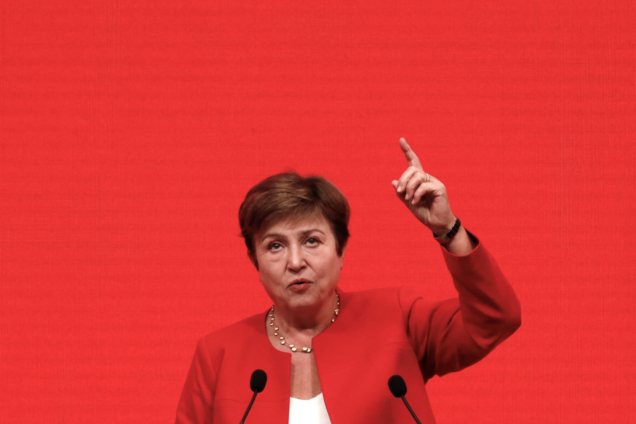Global growth is projected to be in line with the April 2024 World Economic Outlook (WEO) forecast, at 3.2% in 2024 and 3.3% in 2025.
According to the International Monetary Fund, global activity and world trade firmed up at the turn of the year, with trade spurred by strong exports from Asia, particularly in the technology sector.
Relative to the April 2024 WEO, first quarter growth surprised on the upside in many countries, although downside surprises in Japan and the United States were notable.
In the United States, after a sustained period of strong outperformance, a sharper-than-expected slowdown in growth reflected moderating consumption and a negative contribution from net trade. In Japan, the negative growth surprise stemmed from temporary supply disruptions linked to the shutdown of a major automobile plant in the first quarter.
In contrast, the WEO said shoots of economic recovery materialised in Europe, led by an improvement in services activity.
In China, resurgent domestic consumption propelled the positive upside in the first quarter, aided by what looked to be a temporary surge in exports belatedly reconnecting with last year’s rise in global demand. These developments have narrowed the output divergences somewhat across economies, as cyclical factors wane and activity becomes better aligned with its potential.
Global disinflation slowing
However, varied momentum in activity at the turn of the year has somewhat narrowed the output divergence across economies as cyclical factors wane and activity becomes better aligned with its potential.
According to the IMF, services price inflation is holding up progress on disinflation, which is complicating monetary policy normalisation.
“Upside risks to inflation have thus increased, raising the prospect of higher-for-even-longer interest rates, in the context of escalating trade tensions and increased policy uncertainty”, it pointed out.
To manage these risks and preserve growth, it said the policy mix should be sequenced carefully to achieve price stability and replenish diminished buffers.
Meanwhile, the momentum on global disinflation is slowing, signaling bumps along the path.
This reflects different sectoral dynamics: the persistence of higher-than-average inflation in services prices, tempered to some extent by stronger disinflation in the prices of goods.
Nominal wage growth remains brisk, above price inflation in some countries, partly reflecting the outcome of wage negotiations earlier this year and short-term inflation expectations that remain above target.
Latest Stories
-
Ex NYC Governor Andrew Cuomo under investigation for Covid testimony
28 minutes -
OKESS firearm case: Student, stepfather granted GH¢80,000 bail
40 minutes -
Ghana throws open its doors with visa processing slashed to 5 days in dramatic policy reset
54 minutes -
Italy tightens rules for Italian descendants to become citizens
1 hour -
Trump ambushes S African leader with claim of Afrikaners being ‘persecuted’
1 hour -
Judge says US deportations to South Sudan violate court order
2 hours -
US accepts gifted Qatari plane to join Air Force One fleet
2 hours -
Tottenham beat Man Utd to win Europa League & end 17-year wait for trophy
2 hours -
Clear and strong climate policies are antidote to economic uncertainty – UN Climate Chief
2 hours -
Journalism has become politicised and cheap – KSM laments
2 hours -
Climate Education reaches differently-abled children at Garden City Special School
2 hours -
Mahama’s remarks on Cedi vindicate NPP’s economic legacy – Minority
3 hours -
I lied about having radio experience to get hired – KSM
3 hours -
NLC direct University Senior Staff Association to call off strike
3 hours -
Shelters in crisis: Calls grow for gov’t support as caregivers struggle to protect vulnerable children
3 hours

